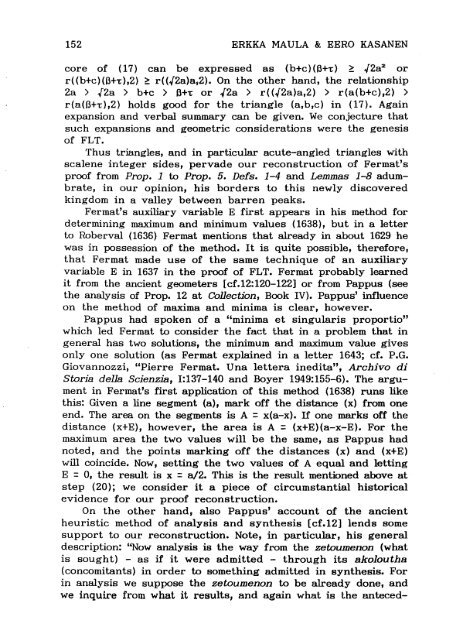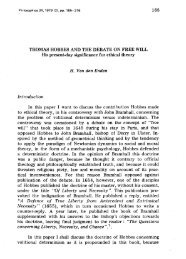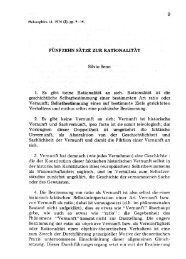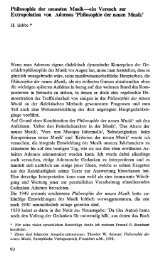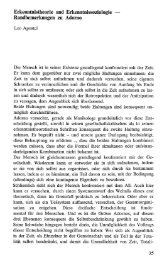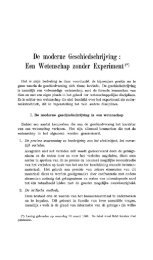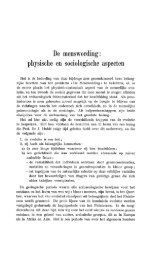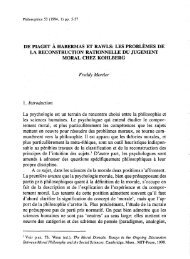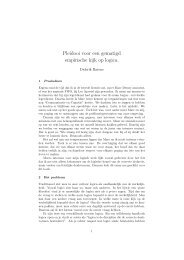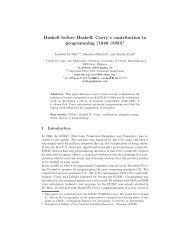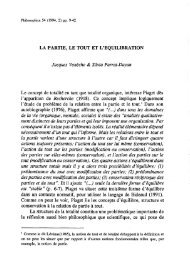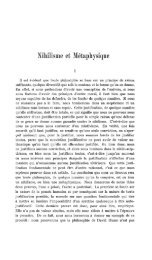CHEZ FERMAT A.D. 1637' Erkka Maula and Eero Kasanen Abstract ...
CHEZ FERMAT A.D. 1637' Erkka Maula and Eero Kasanen Abstract ...
CHEZ FERMAT A.D. 1637' Erkka Maula and Eero Kasanen Abstract ...
Create successful ePaper yourself
Turn your PDF publications into a flip-book with our unique Google optimized e-Paper software.
152 ERKKA MAULA & EERO KASANEN<br />
core of (17) can be expressed as (b+c) (J3+-r) ~ ..[2a 2 or<br />
r( (b+c) (13+,;),2) ~ r( ({2a)a,2). On the other h<strong>and</strong>, the relationship<br />
2a > {2a > b+c > J3+,; or {2a > r( ({2a)a,2) > r(a(b+c),2) ><br />
r(a(B+,;),2) holds good for the triangle (a,b,c) in (17). Again<br />
expansion <strong>and</strong> verbal summary can be given. We conjecture that<br />
such expansions <strong>and</strong> geometric considerations were the genesis<br />
of FLT.<br />
Thus triangles, <strong>and</strong> in particular acute-angled triangles with<br />
scalene integer sides, pervade our reconstruction of Fermat's<br />
proof from Frap. 1 ta Frap. 5. Defs. 1-4 <strong>and</strong> Lemmas 1-8 adumbrate,<br />
in our opinion, his bordera ta this newly discovered<br />
kingdom in a valley between barren peaks.<br />
Fermat's auxiliary variable E first appears in his method for<br />
determining maximum <strong>and</strong> minimum values (1638), but in a letter<br />
to Roberval (1636) Fermat mentions that already in about 1629 he<br />
was in possession of the method. It is quite possible, therefore,<br />
that Fermat made use of the same technique of an auxiliary<br />
variable E in 1637 in the praof of FLT. Fermat probably learned<br />
it from the ancient geometers [cf.12:120-122] or from Pappus (see<br />
the analysis of Prop. 12 at Collection, Book IV). Pappus' influence<br />
on the method of maxima <strong>and</strong> minima is clear, however.<br />
Pappus had spoken of a "minima et singularis proportio"<br />
which led Fermat ta consider the fact that in a problem that in<br />
general has two solutions, the minimum <strong>and</strong> maximum value gives<br />
only one solution (as Fermat explained in a letter 1643; cf. P.G.<br />
Giovannozzi, "Pierre Fermat. Una lettera inedita", Archivo di<br />
Storia della Scienzia, 1:137-140 <strong>and</strong> Boyer 1949:155-6). The argument<br />
in Fermat's first application of this method (1638) runs like<br />
this: Given a line segment (a), mark off the distance (x) from one<br />
end. The area on the segments is A = x(a-x). If one marks off the<br />
distance (x+E), however, the area is A = (x+E)(a-x-E). For the<br />
maximum area the two values will be the same, as Pappus had<br />
noted, <strong>and</strong> the points marking off the distances (x) <strong>and</strong> (x+E)<br />
will coincide. Now, setting the two values of A equal <strong>and</strong> letting<br />
E = 0, the result is x = a/2. This is the result mentioned above at<br />
step (20); we consider it a piece of circumstantial historical<br />
evidence for our praof reconstruction.<br />
On the other h<strong>and</strong>, also Pappus' account of the ancient<br />
heuristic method of analysis <strong>and</strong> synthesis [cf.12] lends sorne<br />
support ta our reconstruction. Note, in particular, his general<br />
description: "Now analysis is the way from the zetoumenon (what<br />
is sought) - as if it were admitted - through its akoloutha<br />
(concomitants) in arder ta something admitted in synthesis. For<br />
in analysis we suppose the zetoumenon ta be already done, <strong>and</strong><br />
we inquire from what it results, <strong>and</strong> again what is the anteced-


